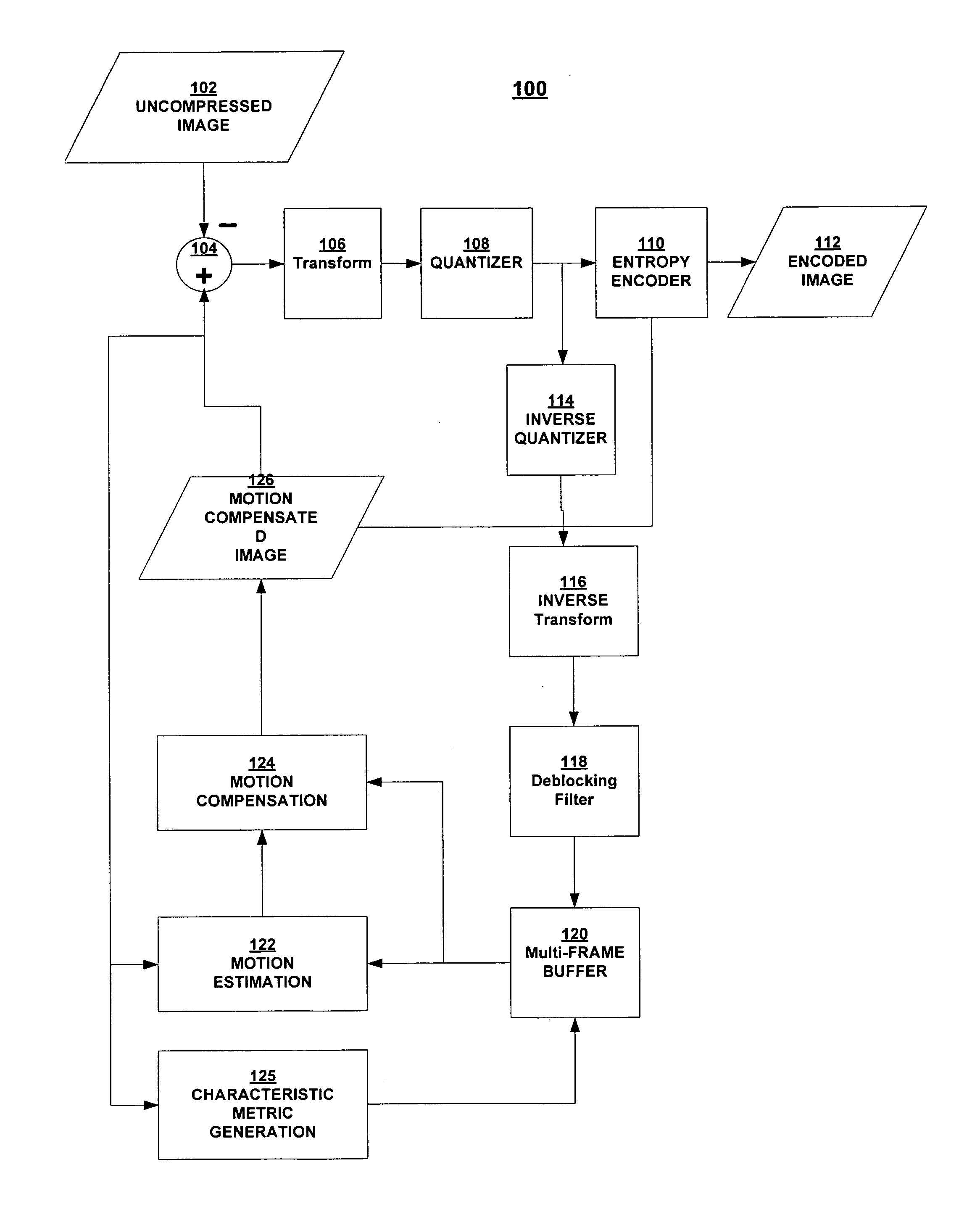Management and selection of reference frames for long term prediction in motion estimation
a reference frame and motion estimation technology, applied in the field of video compression, can solve the problems of significantly affecting the performance of the encoder, the selection approach is not always an effective choice, and the single reference frame motion estimation is already the most expensive operation during video encoding in terms of both cpu and memory usag
- Summary
- Abstract
- Description
- Claims
- Application Information
AI Technical Summary
Problems solved by technology
Method used
Image
Examples
Embodiment Construction
[0023]Referring now to FIG. 1, there is shown a block diagram of an encoder 100 according to one embodiment of the present invention. The encoder 100 can be implemented in hardware, software, or a combination thereof. The encoder 100 generally operates according to principles of an MPEG-4 Advanced Video Codec (ITU H.264) as described in ISO / IEC 14496-10 or similar hybrid Motion Compensation / Block-Transform encoder, with the additional features and structures as further described below. The encoder 100 is used to encode a video sequence that comprises a plurality of uncompressed images 102. The image 102 data comprises a plurality of macroblocks, each macroblock having 4:x:x sample format of luminance and chrominance data, depending on the implementation.
[0024]The type of image (equivalently “frame” or “picture” or “slice”) will be one of an intra-frame (I), a forward predicted picture (P), or a bi-directional predicted picture (B). Intra-pictures (I-frames) are coded without referen...
PUM
 Login to View More
Login to View More Abstract
Description
Claims
Application Information
 Login to View More
Login to View More - R&D
- Intellectual Property
- Life Sciences
- Materials
- Tech Scout
- Unparalleled Data Quality
- Higher Quality Content
- 60% Fewer Hallucinations
Browse by: Latest US Patents, China's latest patents, Technical Efficacy Thesaurus, Application Domain, Technology Topic, Popular Technical Reports.
© 2025 PatSnap. All rights reserved.Legal|Privacy policy|Modern Slavery Act Transparency Statement|Sitemap|About US| Contact US: help@patsnap.com



